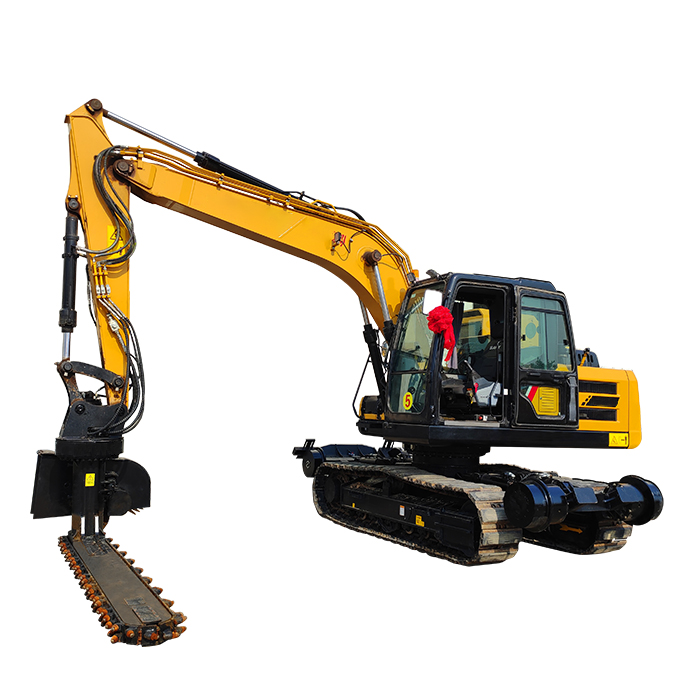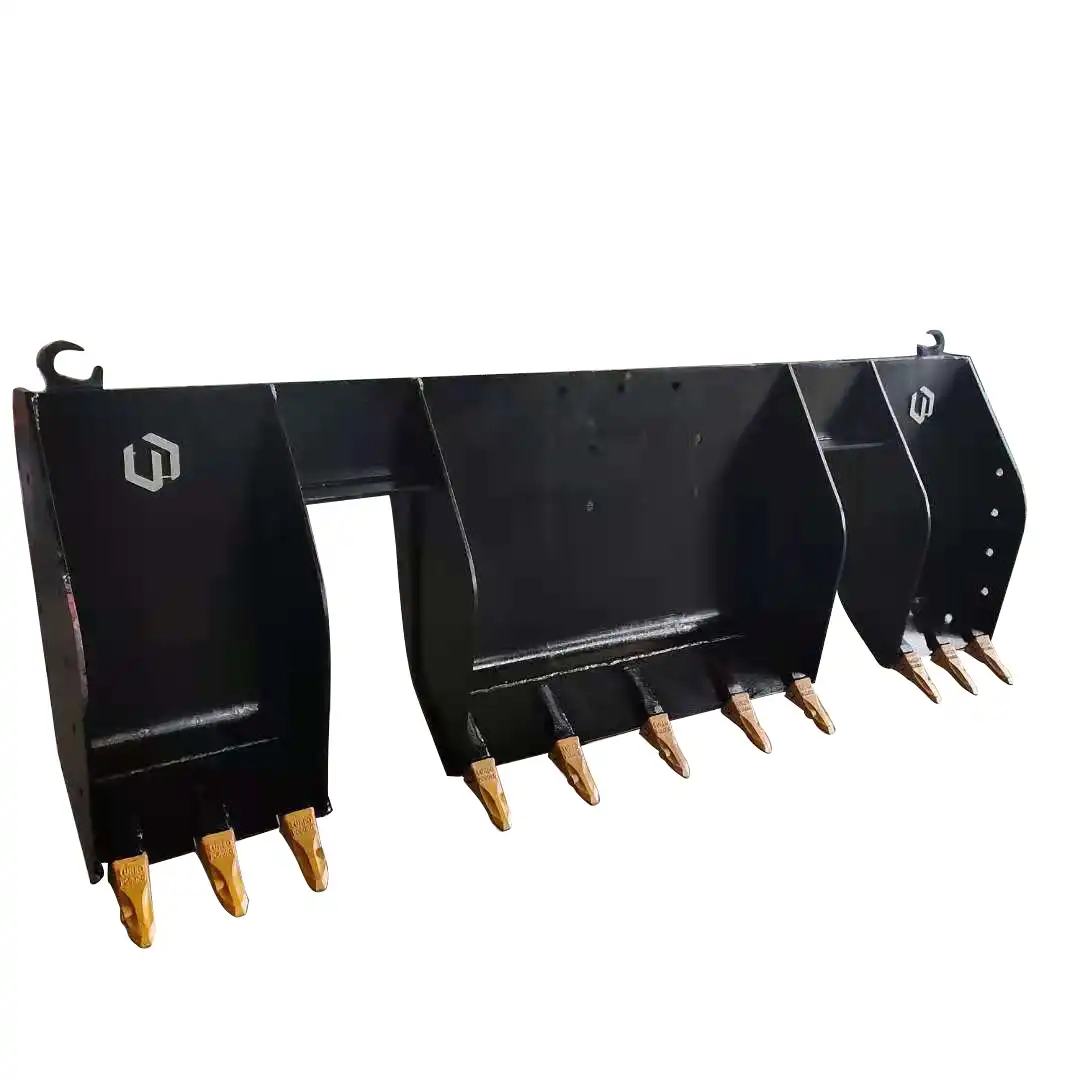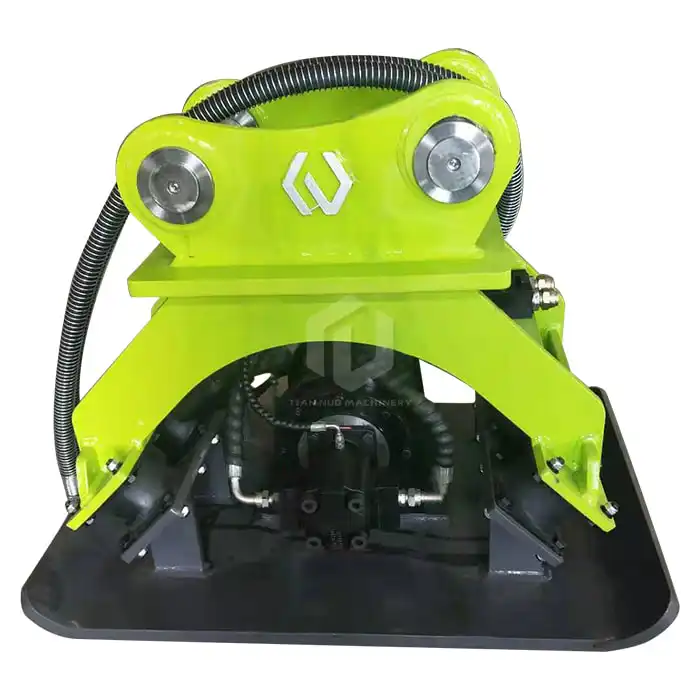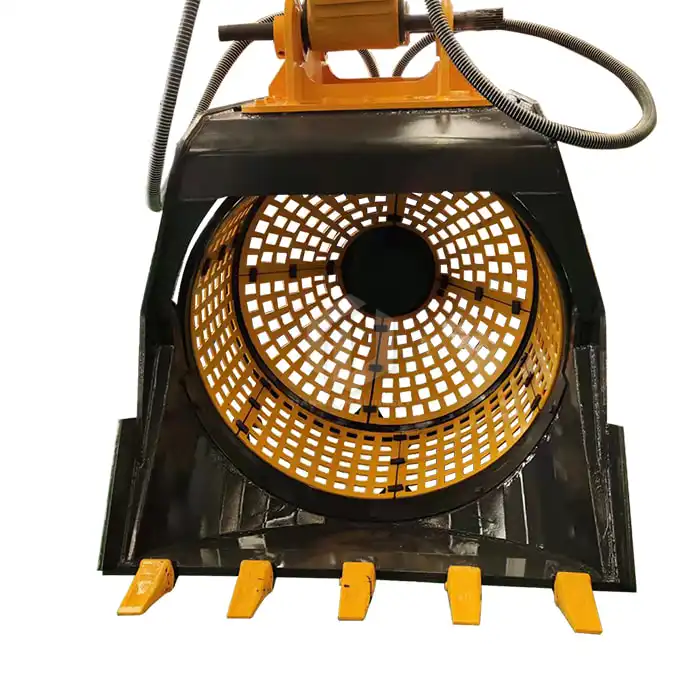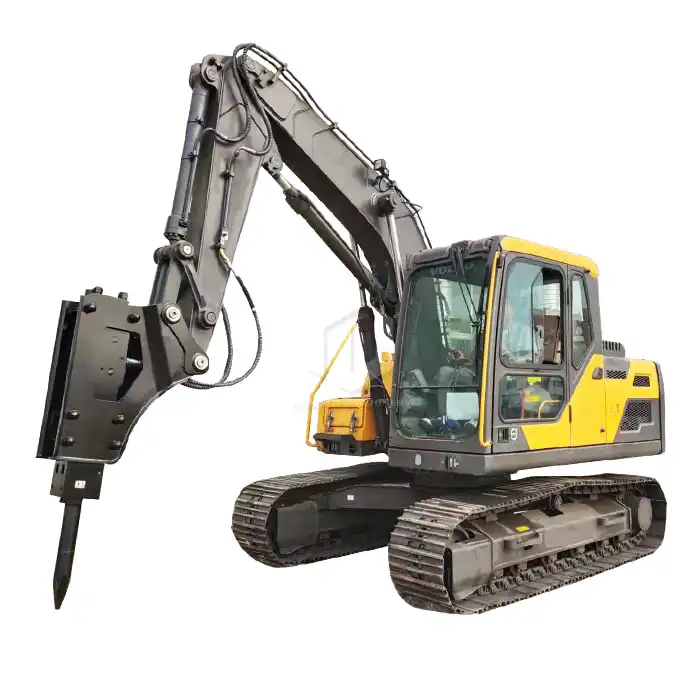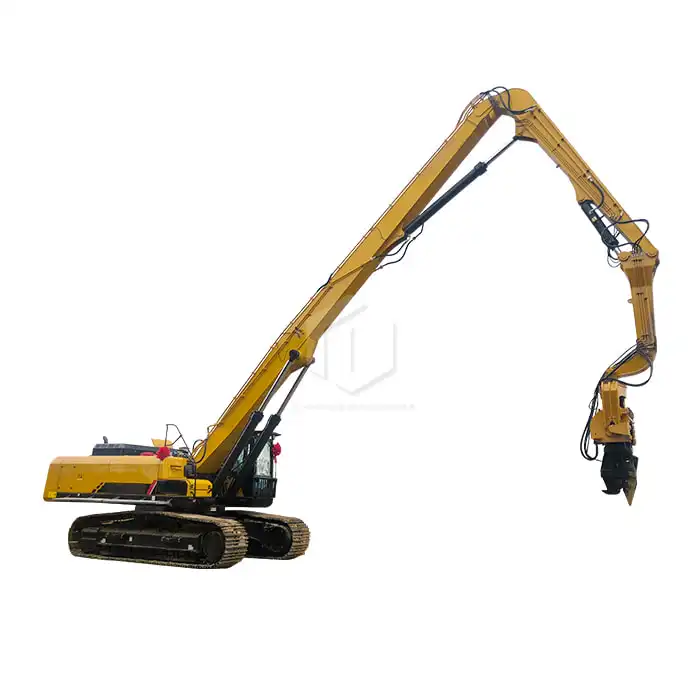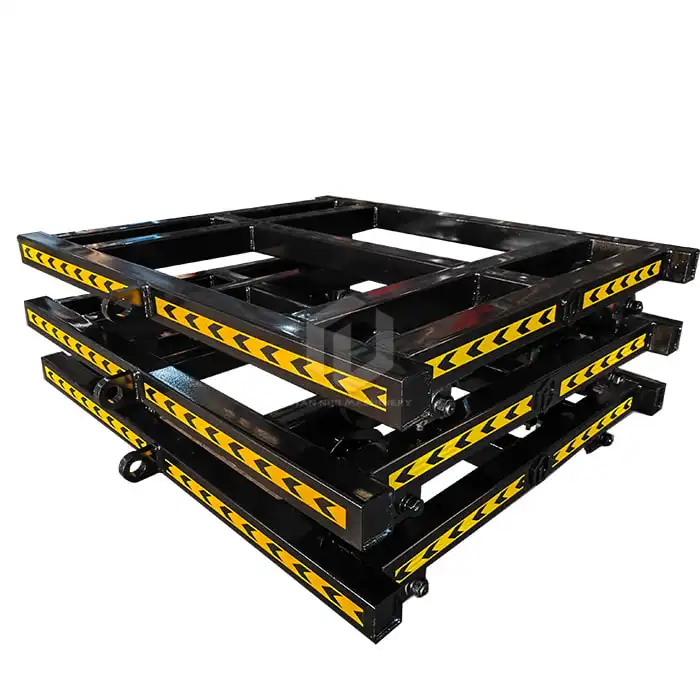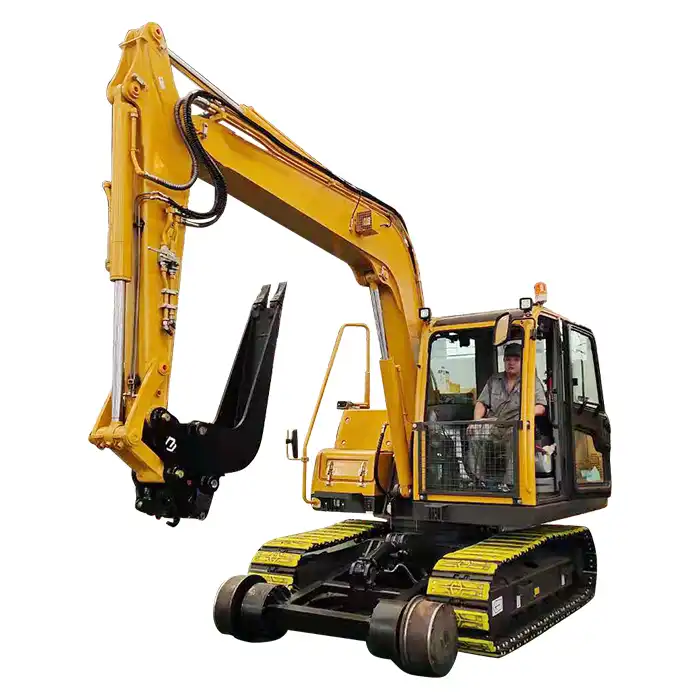Excavator Rock Arm VS Traditional Blasting Operations
In the world of mining and construction, efficiency and safety are paramount. As technology advances, new methods emerge to challenge traditional practices. One such innovation is the excavator rock arm, a tool that's revolutionizing the way we approach rock excavation.
What is the core difference be
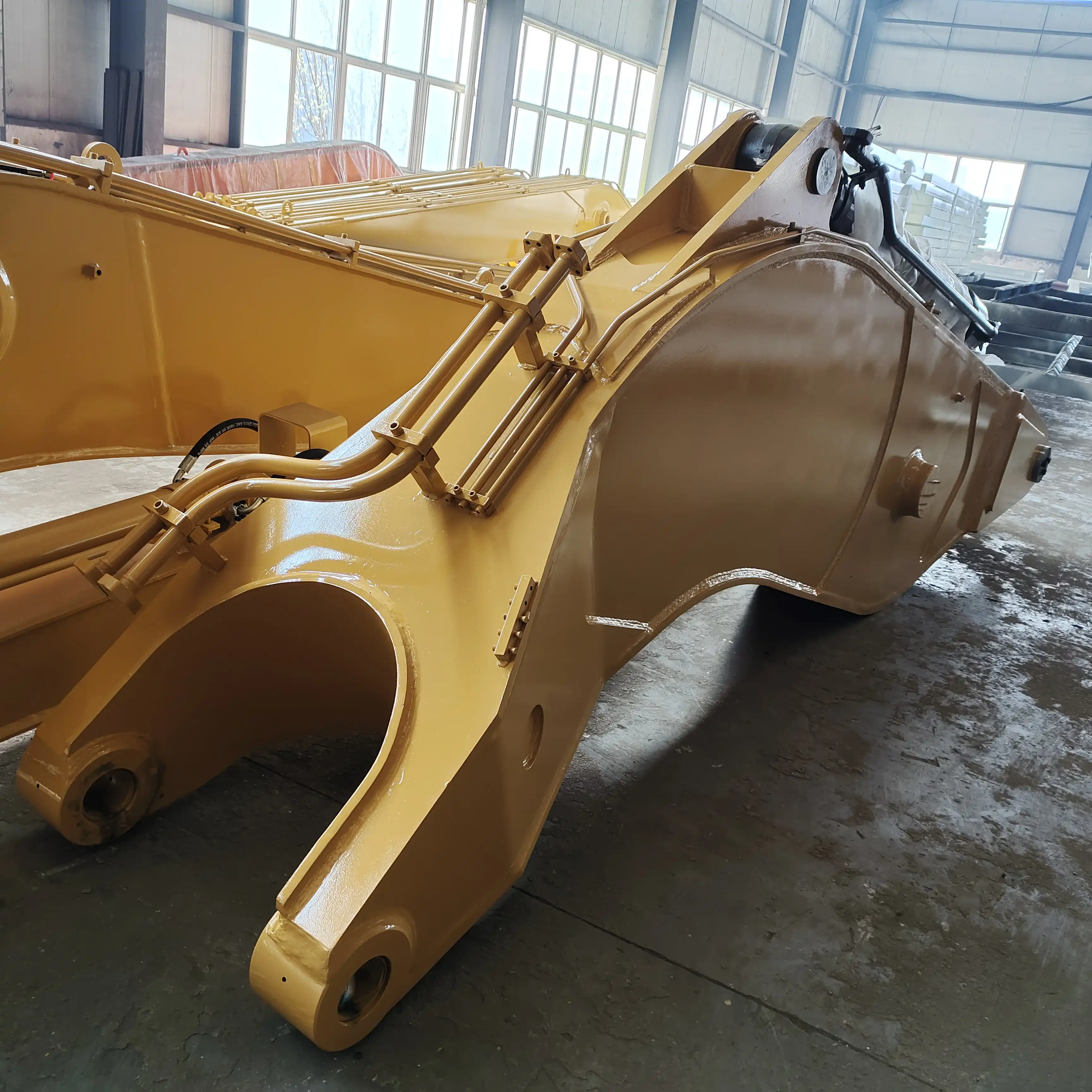
tween excavator rock arm and traditional blasting operations?
The fundamental difference between excavator rock arms and traditional blasting operations lies in their approach to rock breaking. Traditional blasting involves the use of explosives to fracture and displace large volumes of rock. This method has been a staple in the mining and construction industry for centuries due to its ability to quickly break up large rock formations.
On the other hand, excavator rock arms offer a more controlled and precise method of rock breaking. These hydraulic attachments are mounted on excavators and use mechanical force to break rocks. The arm typically consists of a long boom with a powerful impact hammer or ripper at the end. This tool can deliver concentrated force to specific points, allowing for more targeted rock breaking.
One of the key advantages of rock arms is their ability to work continuously. Unlike blasting operations, which require evacuation of the area and have specific detonation times, these arms can operate throughout the workday. This continuous operation can lead to increased productivity in many scenarios.
Moreover, excavator rock arms offer greater flexibility in terms of rock breaking patterns. Operators can easily adjust their approach based on the specific characteristics of the rock formation they're working with. This adaptability is particularly useful in projects where the geological conditions vary significantly across the site.
Environmental impact is another area where these two methods differ significantly. Traditional blasting operations can have a substantial environmental footprint, including dust generation, noise pollution, and potential groundwater contamination from chemical residues. Excavator rock arms, while not entirely free from environmental impact, generally have a lower environmental footprint. They produce less dust, create less vibration, and don't introduce chemical residues into the environment.
It's worth noting that the choice between these methods often depends on the specific requirements of the project. Factors such as the volume of rock to be excavated, the hardness of the rock, the proximity to sensitive structures, and local regulations all play a role in determining the most suitable method.
What are the advantages of excavator rock arm in terms of safety?
Safety is a critical concern in any mining or construction operation, and this is an area where excavator rock arms shine. its safety advantages over traditional blasting operations are numerous and significant.
First and foremost, excavator rock arms eliminate the need for explosives on the worksite. This removal of explosive materials significantly reduces the risk of accidental detonations, which can have catastrophic consequences. The transportation, storage, and handling of explosives all come with inherent risks, which are completely avoided when using rock arms.
Another safety advantage is the increased control over the rock breaking process. With traditional blasting, once the explosives are detonated, there's little control over how the rock will fragment or where debris might fly. This unpredictability can pose serious risks to workers and equipment in the vicinity. Excavator rock arms, on the other hand, allow for precise, controlled breaking of rock. The operator can target specific areas and adjust the force as needed, minimizing the risk of uncontrolled rock fall or flying debris.
The reduced vibration from excavator rock arms is another safety benefit. Blasting operations can create significant ground vibrations, which can potentially destabilize surrounding structures or trigger landslides in vulnerable areas. Rock arms produce much less vibration, reducing these risks and making them safer for use in areas close to buildings or other sensitive structures.
Dust control is another area where excavator arms offer safety advantages. While both methods produce dust, the dust from blasting operations tends to be more widespread and harder to control. Rock arms allow for more localized dust generation, which can be more easily managed with water sprays or other dust suppression techniques. This improved dust control helps protect workers from respiratory issues and maintains better visibility on the worksite.
Furthermore, the use of excavator arms allows for a more flexible evacuation protocol. In blasting operations, all personnel must be cleared from a large area around the blast site. With rock arms, the clearance area is much smaller, typically just the immediate work area of the excavator. This allows for more efficient use of manpower and reduces the risk of workers re-entering danger zones prematurely.
Lastly, the continuous nature of excavator rock arm operations can be safer in terms of worker fatigue management. Blasting operations often involve periods of intense activity followed by downtime, which can lead to irregular work patterns. The steady pace of excavator arm operations allows for more consistent work schedules, potentially reducing fatigue-related safety incidents.
Which method is more suitable for modern rock mining projects?
Determining which method is more suitable for modern rock mining projects isn't a straightforward task. Both excavator rock arms and traditional blasting operations have their place in modern mining, and the choice often depends on a variety of factors specific to each project.
Excavator rock arms are increasingly favored in many modern mining projects, particularly those in urban or environmentally sensitive areas. Their precision, control, and reduced environmental impact make them an excellent choice for projects where minimizing disturbance to surrounding areas is crucial. They're also well-suited for smaller scale operations or for selective mining where only specific portions of rock need to be removed.
The continuous operation capability of rock arms is another factor that makes them suitable for many modern projects. In an era where efficiency and productivity are key, the ability to work consistently throughout the day without the interruptions associated with blasting can be a significant advantage.
Moreover, as safety standards in the mining industry continue to become more stringent, the inherent safety advantages of excavator rock arms make them an attractive option. The reduced risks associated with not handling explosives and the greater control over the rock breaking process align well with modern safety priorities.
However, traditional blasting operations still have their place in modern mining. For large-scale operations where vast quantities of rock need to be broken quickly, blasting can still be the most efficient method. It's particularly effective in hard rock environments where mechanical methods might struggle.
Blasting also remains the preferred method in some types of underground mining, where the use of large excavators with rock arms may not be feasible due to space constraints. In these scenarios, carefully controlled blasting can be more effective and efficient.
The geological conditions of the site play a crucial role in determining the most suitable method. In areas with highly fractured or variable rock conditions, rock arms might be more effective as they allow for adaptive breaking techniques. Conversely, in areas with uniform, hard rock formations, blasting might be more efficient.
Economic considerations also factor into the decision. While excavator rock arms typically have lower operational costs, they may require a higher initial investment in equipment. Blasting operations, while potentially more expensive in terms of ongoing costs (explosives, specialized personnel), might require less upfront investment.
Ultimately, many modern mining projects are adopting a hybrid approach, using both methods where appropriate. For instance, blasting might be used for initial bulk rock removal, followed by rock arms for more precise work or in areas close to boundaries or sensitive structures.
The choice between rock arms and traditional blasting operations in modern mining projects should be based on a thorough assessment of the specific project requirements, site conditions, safety considerations, environmental impact, and economic factors. As the mining industry continues to evolve, we can expect to see further innovations in both mechanical and explosive rock breaking techniques, providing even more options for future projects [3].
China Excavator Rock Arm Suppliers
As technology continues to advance, we can expect excavator rock arms to become even more efficient and versatile, further expanding their applicability in various projects. At the same time, innovations in blasting techniques may address some of the current limitations and concerns associated with traditional methods.
Ultimately, the goal is to find the most effective, safe, and environmentally responsible way to carry out rock excavation. This often involves a careful analysis of project requirements and site conditions, and in many cases, a combination of different techniques to achieve optimal results.
For those considering the use of excavator rock arms in their projects, it's crucial to partner with a reliable and experienced supplier. Tiannuo Machinery, with its commitment to innovation and quality, offers a range of rock arm solutions designed to meet diverse project needs.
If you are choosing your excavator rock arm supplier, please feel free to reach out to our manager at arm@stnd-machinery.com and the team at rich@stnd-machinery.com and tn@stnd-machinery.com.
References
[1] Hartman, H.L. and Mutmansky, J.M., 2002. Introductory mining engineering. John Wiley & Sons.
[2] Hustrulid, W.A., Kuchta, M. and Martin, R.K., 2013. Open pit mine planning and design, two volume set & CD-ROM pack. CRC Press.
[3] Darling, P. ed., 2011. SME mining engineering handbook. Society for Mining, Metallurgy, and Exploration.

